Time Travel
Between the glacial valleys and plateaux of the Yorkshire Dales and the purplegrey expanses of the North Yorkshire Moors, the Vale of York spreads out like a quilt: a flat, agricultural landscape where, as a child in the 1970s and 80s, I learned how to be and be in the world. I remember barley fields full of wildflowers, annual feasts of mushrooms gathered from cow pastures, the calls of cuckoos marking out the boundaries of summer, and the fish-filled beck, alive with minnows, sticklebacks and trout, that ran through the village where we lived. Returning there as an adult, I always expect to arrive at this landscape of memory, but it is a landscape that only exists in the past, industrial farming and subsidy geared towards profit and productivity rather than stewardship of the land to meet the needs both of humans and of all those other forms of life. I always arrive now with a sense of loss: no wildflowers, no mushrooms, no cuckoos, no fish, not there, not now.
We were moored in a bay off Vatersay. Grey mist and a soft horizon, smudging the line between sky and sea; drizzle, wet wind, rain. I walk across the beach, over the dunes, and into the machair. Stopped still in a field of flowers: skyblue, pink, purple, eggblue, mustardyellow, pinkwhite. Snails that had adapted to crawl over sand. Meadow pippits singing on all the fenceposts. And the next day, on South Uist, corn marigolds ablaze in a field of rye.
I think it has been thirty years since I have been in a field like this.
At Barra, anchored in the harbour, we watch a bunch of teenage boys, fully dressed right down to their fresh white trainers, leap from the end of the pier into the sea, and it looked to me as though they were testing the possibility for leaping into the future; away, perhaps, from here. That night, we watch a group of women weave their way through waulking songs, pounding on the table of tradition, their past translated into sound.
I rarely manage to be so fully in the present as I have this week: alert to the landscape, to each island’s topography, to the infinitely variable living skin of the sea; alert to the nuances of the wind, the light, the weather; and alert all the time to these islands’ continuous present, to their visioning of new models for the future, and their living landscapes of a rich and fertile past.
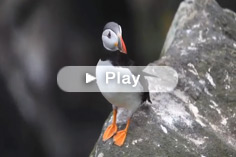


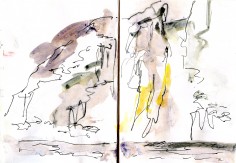
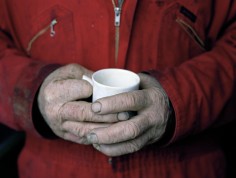
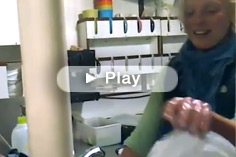


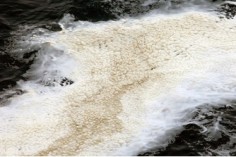
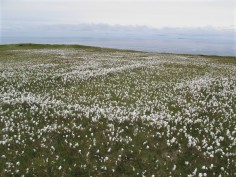

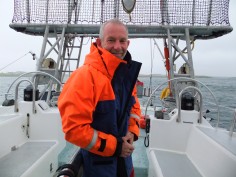








No Comments